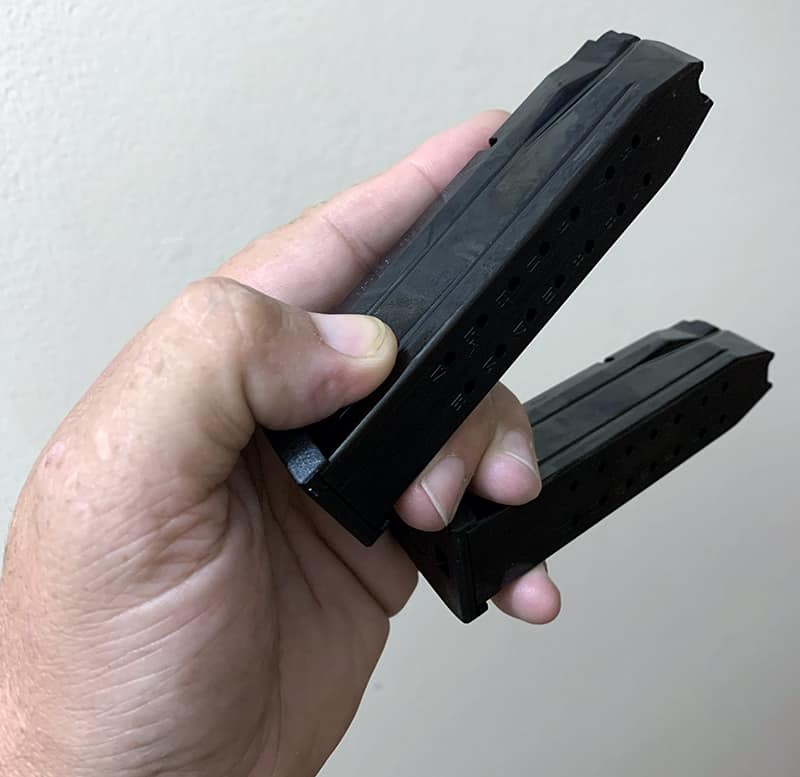Why I don't teach
tactical reloads
As a police firearms instructor, I was forced by department mandates to teach a technique known as the Tactical Reload. This method involves topping off the ammunition in your pistol while there is a lull in a gunfight and you are behind cover. The theory is that when the fighting resumes, it is best to have a full magazine in the gun. First, a fresh magazine is pulled from your ammo pouch before dropping the magazine from the weapon. Next, you move the hand with the magazine up to the pistol and drop the old, partially filled one into the same hand you’re using to hold the new one. The fresh magazine is then inserted into the gun to top it off. Finally, the partially filled magazine is slipped in your pocket just in case it is needed later.
The premise for this is sound; it is best to have a fresh magazine. The problem comes during the execution. Holding two magazines in your weak hand is awkward at best. This is especially true for people with smaller hands. Heck, my hands require extra-large gloves and it is clumsy for me. Several female officers I taught couldn’t do it at all. Also, seating the new magazine correctly while still holding the old magazine is awkward. The result of all of this is I have witnessed officers dropping one or both magazines as they try to make the transition. I’ve seen officers re-insert the same magazine they removed and put the full one in their pocket rather than the other way around. But the main thing I noticed was the entire procedure ended up being extremely time-consuming. On average, it took twice as long to complete the Tactical Reload as it did to achieve a standard mag drop reload.
I performed a test with officers who had been learning the Tactical Reload and timed it against a standard reload. In every case, the standard reloads topped off the gun twice as fast as the Tactical Reload. One could argue, “Yeah, but then you have a partial magazine lying on the ground rather than in your pocket.” This is true, but adding the additional step of picking up the magazine and putting it in their pocket only netted a savings of about a quarter to one-third time. It’s reason enough for me not to teach this technique. But it isn’t just about saving time.
The Main Reason
The main reason I don’t teach Tactical Reloads is because it takes a simple reload and complicates it beyond many officers’ capabilities. They must learn a standard reload as part of basic gun-handling skills, and it works for everyone. Why complicate it by making them learn a different method? A real gunfight is about as stressful an event you could face, and we know complex motor skills tend to go out the window when that much stress is involved. Can we expect the average officer to carry out a movement they have trouble with — even without the pressure? I say it’s an unreasonable expectation. Add to it the fact that rather than perfecting a standard reload, they must now split their time into two different techniques, complicating their decision-making process during a gunfight. This is the time their thinking skills are at their worst.
Fewer Complications Are Better
When training for a life-or-death situation, fewer complications are better. If you have a technique that is a requirement of gun handling in the first place and is effective, why add additional steps? It doesn’t make sense. There are undoubtedly people who can execute a Tactical Reload quickly and efficiently — if you are one of those people, good for you. But most shooters (including most police officers) don’t get enough practice time for the basics. Let’s focus on perfecting those.
Tactical Reloads fall in the same category as weak-hand shooting. I worked for a department whose police chief wanted the firearms instructors to teach weak-hand shooting because she learned of an account where it saved an officer’s life. Yes, weak-hand shooting and Tactical Reloads can be useful techniques to know, but they shouldn’t be taught at the expense of basic gun-handling skills that work.
I use the Tactical Reload as an example, but it is just that — an example. There are many other techniques in this category. That’s why it’s important to KISS it (Keep It Simple Stupid). No matter what technique you’re taught, think about it critically to ensure it’s not overcomplicating things.




